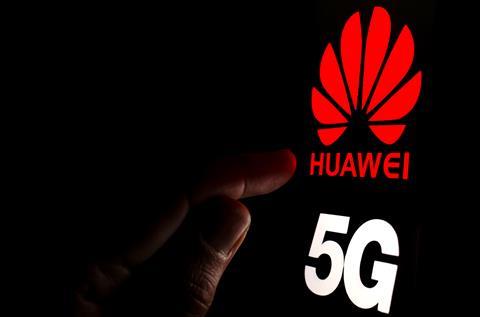- UK issues new rules on 5G deployments
- Huawei dodges outright ban, but 35% cap placed on “high risk vendors”
- HRV kit will also be banned from core of 5G networks

The UK government has announced it will restrict telecoms companies from using kit from “high risk vendors” in core parts of 5G networks – but draws short of banning the likes Huawei completely.
Following its Telecoms Supply Chain Review, the UK will limit the market share for the Chinese vendor to 35% and ban its equipment from sensitive sites such as nuclear and military facilities. This cap will include both 5G and full-fibre networks.
The decision comes in the face of political pressure from allies including the United States, who have put pressure on the UK to implement a complete ban on Huawei from 5G deployments.
The government has identified “high risk vendors” (HRV) as those who pose “greater security and resilience risks to UK telecoms networks.” Ministers have expressed concern that Huawei, with its close relationship to the Chinese government, could give access to 5G networks to Beijing operatives – something the Chinese vendor has denied.
- Read more: 5G: The impact on broadcasting
UK PM outlines security guidelines
Prime Minister Boris Johnson chaired a meeting of the National Security Council (NSC) where it was agreed that the National Cyber Security Centre should offer guidance to the four UK telecoms operators – EE, Vodafone, O2 and Three – about their 5G rollouts. All four have partnerships with Huawei.
This advice is that high risk vendors should be:
- Excluded from all safety related and safety critical networks in Critical National Infrastructure
- Excluded from security critical ‘core’ functions, the sensitive part of the network
- Excluded from sensitive geographic locations, such as nuclear sites and military bases
- Limited to a minority presence of no more than 35 per cent in the periphery of the network, known as the access network, which connect devices and equipment to mobile phone masts
The rules will be enshrined in law, with regulator Ofcom being handed responsibility for enforcing the cap.
Digital secretary Nicky Morgan said in a statement: “We want world-class connectivity as soon as possible but this must not be at the expense of our national security. High risk vendors never have been and never will be in our most sensitive networks.
“The government has reviewed the supply chain for telecoms networks and concluded today it is necessary to have tight restrictions on the presence of high risk vendors. This is a UK-specific solution for UK-specific reasons and the decision deals with the challenges we face right now.
“It not only paves the way for secure and resilient networks, with our sovereignty over data protected, but it also builds on our strategy to develop a diversity of suppliers. We can now move forward and seize the huge opportunities of 21st-century technology.”
My way or the Huawei
5G is seen as a key technology for the future of digital services, with content identified as one of the key use cases for the new mobile tech. It is also widely expected to be used in live broadcasting and remote production, meaning this ruling could have major ramifications for the media and entertainment sector.
The UK government said the 35% will be “kept under review” meaning it could be adjusted further, with the aim of creating a more diversified telecoms market.
Advice published by the NSC outlines how this cap will work. It says:
“This cap properly balances two different security and resilience risks; the first being the risk associated with HRVs, the second being the need for a diversity of supply in the market. Specifically:
- “i. For FTTP and other gigabit and higher capable access networks3, at most 35% of premises passed by a network should be served by equipment from an HRV;
- “ii. For 5G access networks, at most 35% of expected network traffic volume on any particular network passes through HRV equipment and at most 35% of base station sites nationally on any particular network should be served by equipment from an HRV;4
- “iii. For any other functions in 5G, FTTP and other gigabit or higher capable fixed access networks, at most 35% of the network elements from a particular equipment class in any particular network should be provided by an HRV.”
It marks the end of the Telecoms Supply Chain Review first published in July 2019 and will be a relief for Huawei and fellow Chinese network vendor ZTE, with both facing a full ban from the UK’s 5G rollout. UK operators began launching 5G networks last year and are set to expand them significantly in 2020.
In a statement, Huawei vice president Victor Zhang said the Chinese vendor was “reassured” by the UK’s confirmation that it can continue to be involved in 5G deployments.
“This evidence-based decision will result in a more advanced, more secure and more cost-effective telecoms infrastructure that is fit for the future,” he added. “It gives the UK access to world-leading technology and ensures a competitive market.”
“We have supplied cutting-edge technology to telecoms operators in the UK for more than 15 years. We will build on this strong track record, supporting our customers as they invest in their 5G networks, boosting economic growth and helping the UK continue to compete globally.”
“We agree a diverse vendor market and fair competition are essential for network reliability and innovation, as well as ensuring consumers have access to the best possible technology.”



























No comments yet